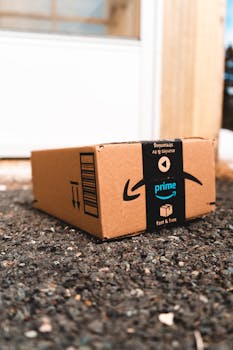
**
Prime Day 2024 is officially underway, and with it comes a flurry of deals and a bold proclamation from none other than Jim Cramer. The outspoken CNBC personality has declared Amazon the "most inflation-fighting" retailer, a statement sure to spark debate among consumers and investors alike. But is Cramer's assessment accurate, and what does it mean for shoppers navigating the persistent economic headwinds of inflation?
Amazon Prime Day 2024: A Lifeline Against Inflation?
Cramer's declaration, made on his popular show "Mad Money," points to Amazon's massive scale and diverse product offerings as key factors in its ability to offer competitive prices during a period of high inflation. He highlighted the sheer volume of discounted goods available during Prime Day, suggesting that the event provides a significant opportunity for consumers to save money on essential items and discretionary purchases.
This strategy is not without merit. High inflation affects everyone, forcing consumers to make tough choices about where to spend their money. Prime Day, with its seemingly endless array of deals, could offer a valuable respite for those trying to stretch their budgets. The event's focus on deeply discounted prices on everything from electronics and home goods to groceries and apparel directly counters the inflationary pressures consumers are facing.
Prime Day Deals: A Closer Look at the Inflation-Fighting Potential
Amazon's Prime Day deals are notoriously diverse. This year, the range of discounts spans various categories, including:
- Electronics: Smart TVs, laptops, tablets, and smart home devices are frequently heavily discounted during Prime Day, providing opportunities for consumers to upgrade their technology without breaking the bank.
- Household Goods: From kitchen appliances to cleaning supplies, everyday household essentials often see significant price reductions. This allows consumers to stock up on necessities at lower prices, mitigating the impact of inflation on household budgets.
- Groceries: Amazon's grocery delivery service, along with its Whole Foods Market partnerships, offers discounts on groceries, a significant component of household spending. This is particularly impactful given the rising cost of food.
- Apparel & Fashion: Clothing and fashion accessories are routinely included in Prime Day's deals, offering consumers a chance to refresh their wardrobes without paying full price.
- Beauty & Personal Care: From makeup and skincare to toiletries, this category often sees considerable savings during Prime Day.
These deep discounts, if genuinely reflective of real price reductions rather than simply marketing ploys, could demonstrably help consumers combat inflation, especially those on tighter budgets.
Analyzing Cramer's Claim: Is Amazon Truly the "Most Inflation-Fighting"?
While Cramer's enthusiastic endorsement is attention-grabbing, a nuanced examination is necessary. Amazon's success in presenting itself as an inflation-fighting force hinges on several factors:
- Scale and Supply Chain: Amazon's vast network and robust supply chain allow for greater efficiency and potentially lower costs, making price cuts feasible on a large scale.
- Competitive Pricing Strategy: Amazon engages in aggressive competitive pricing, leveraging its scale to undercut competitors and secure market share. This aggressive strategy benefits consumers but also pressures other retailers.
- Prime Membership Model: The Prime membership model, while costing a yearly fee, often comes with significant long-term cost savings and convenience benefits, including free shipping and early access to Prime Day deals. This further enhances Amazon's value proposition for price-conscious consumers.
- Data-Driven Pricing: Amazon leverages its immense data capabilities to optimize pricing strategies, ensuring they remain competitive and aligned with consumer demand.
However, it's crucial to acknowledge potential counterarguments:
- Selective Discounting: Not all products receive significant discounts during Prime Day. Some deals may be less substantial than advertised, or only apply to specific products or brands.
- Increased Spending: The temptation of readily available deals might encourage consumers to buy items they don't necessarily need, thus negating some of the savings achieved.
- Prime Membership Costs: The annual cost of a Prime membership needs to be factored into the overall value proposition, potentially offsetting some of the savings for certain individuals.
Prime Day and the Broader Economic Landscape
Prime Day's impact on inflation is undoubtedly complex and far-reaching. While it undoubtedly presents significant savings opportunities for consumers, its effect on the broader economy requires further analysis. Amazon's scale and influence mean its pricing decisions can have cascading effects on the competitive landscape, influencing other retailers and potentially affecting overall price levels.
The Future of Inflation-Fighting Retail Strategies
Amazon's Prime Day strategy highlights a broader trend in the retail landscape: the growing importance of strategically priced promotions and membership programs as tools for combating inflation. Other retailers are likely to follow suit, intensifying competition and potentially leading to further price reductions across the board.
However, true sustained relief from inflation will likely require broader economic policy solutions, rather than relying solely on individual retailer initiatives. The effectiveness of Prime Day as an inflation-fighting tool remains a subject of ongoing discussion and requires a balanced perspective, considering both the potential benefits and limitations. For now, consumers can continue to navigate the deals of Prime Day 2024, carefully assessing whether they truly represent value and align with their individual budgeting needs.




















